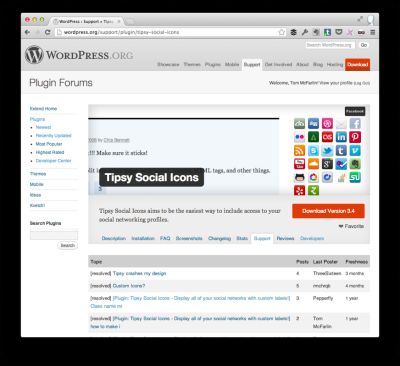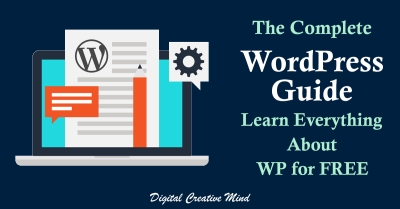Ever wondered why some websites keep visitors hooked while others seem to fall flat? That’s where user engagement comes into play. It’s all about creating a site that encourages visitors to interact, explore, and return. For WordPress site owners, boosting engagement isn’t just about aesthetics — it’s about crafting an experience that resonates with your audience. Engaged users are more likely to stay longer, share your content, and convert into loyal customers. So, understanding the importance of user engagement is the first step toward designing a WordPress site that truly connects with your visitors.
Planning Your Website Layout for Better User Experience

Think of your website layout as the blueprint of a well-designed home — it needs to be inviting, intuitive, and easy to navigate. When planning your WordPress site, start with a clear idea of what you want visitors to do. Do you want them to read your blog, buy a product, or sign up for a newsletter? Once you have your goals in mind, focus on creating a layout that guides users effortlessly towards those actions.
Here are some key tips to consider when planning your layout:
- Keep it simple: Avoid clutter. Use whitespace effectively to give elements room to breathe and make your content more digestible.
- Prioritize navigation: Use a clear menu structure and include navigation aids like breadcrumbs or sticky menus so users can easily find their way around.
- Use visual hierarchy: Highlight important sections with larger fonts, contrasting colors, or bold headings to direct attention naturally.
- Optimize for mobile: With more users browsing on phones and tablets, ensure your layout looks great and functions smoothly across all devices.
- Incorporate calls-to-action (CTAs): Place buttons or links strategically to guide users toward desired actions, like subscribing or making a purchase.
Remember, a well-planned layout isn’t static — it evolves based on user feedback and analytics. Regularly testing your design and making improvements will help you create a seamless experience that encourages visitors to stay longer and engage more deeply with your content.
3. Choosing the Right WordPress Themes and Plugins to Boost Engagement
When it comes to creating a website that keeps visitors hooked, your choice of themes and plugins plays a crucial role. Think of your theme as the outfit that sets the tone for your entire site—it should be attractive, functional, and aligned with your brand. Plugins, on the other hand, are like accessories that add useful features to enhance user experience. Picking the right ones can make your site more interactive, engaging, and easy to navigate.
Start with a responsive, user-friendly theme. Mobile devices account for a huge chunk of web traffic, so your site must look and work great on smartphones and tablets. Look for themes that are optimized for speed, are customizable without needing coding skills, and support popular page builders like Elementor or Beaver Builder.
Next, think about the plugins that can help boost engagement:
- Social Sharing Plugins – Encourage visitors to share your content on social media platforms, expanding your reach.
- Comment and Interaction Plugins – Foster community and discussion through comment systems like Disqus or WPDiscuz.
- Pop-up and Lead Capture Plugins – Use tools like OptinMonster or Sumo to create engaging pop-ups that offer value, like free resources, in exchange for email addresses.
- Gamification Plugins – Make your site fun with badges, points, or leaderboards to motivate visitors to participate more actively.
But beware of overloading your site with too many plugins. Too many can slow down your site and cause conflicts. Always choose reputable plugins, keep them updated, and remove any that aren’t serving your engagement goals.
Finally, regularly review your site’s analytics to see which themes and plugins are actually making a difference. Engagement isn’t just about looks — it’s about functionality and how well your tools serve your visitors’ needs.
4. Optimizing Content for Readability and Interaction
Content is king, but only if it’s easy and enjoyable for your visitors to consume. The goal is to create content that’s not only informative but also engaging enough to encourage readers to stay longer, comment, and share. Here’s how you can optimize your content for maximum readability and interaction:
Start with a clear structure. Use headings, subheadings, and bullet points to break up long blocks of text. This makes scanning easier and helps users find the information they’re after quickly.
Keep your sentences short and conversational. Write as if you’re chatting with a friend — friendly, approachable, and easy to understand. Use simple language, and avoid jargon unless your audience expects it.
| Best Practices for Readability | Tips for Engagement |
|---|---|
| Use clear headings and subheadings | Ask questions to invite comments |
| Break text into small paragraphs | Include calls-to-action (CTAs) like “Share your thoughts below” |
| Incorporate visuals—images, infographics, videos | Use interactive elements like quizzes or polls |
| Highlight important points with bold or italics | Encourage sharing by adding social share buttons |
Another key aspect is multimedia. Incorporate relevant images, videos, or infographics to illustrate your points and make your content more engaging. Visuals help break up text and cater to different learning styles.
Engagement also thrives on interaction. End your articles with open-ended questions or prompts that invite comments. For example, “What’s your favorite way to stay productive? Share your tips below!” This encourages readers to participate and creates a sense of community.
Finally, optimize your content for readability on all devices. Use a mobile-friendly font size, sufficient line spacing, and a clean layout. When your content is easy to read and interact with, visitors are more likely to stay longer, explore more pages, and become loyal followers of your site.
5. Implementing Interactive Features and Call-to-Action Buttons
When it comes to keeping visitors engaged on your WordPress site, nothing beats the power of interactive features and well-placed call-to-action (CTA) buttons. These elements make your website more dynamic and encourage users to take specific actions, whether it’s signing up for a newsletter, making a purchase, or simply exploring more of your content.
Interactive features can include things like quizzes, polls, comment sections, live chat support, or even interactive infographics. These tools make your site more engaging because they invite visitors to participate rather than just passively read or browse. For example, a quick quiz related to your niche can entertain visitors and provide you with valuable insights into their preferences.
As for call-to-action buttons, these are essential for guiding your visitors toward your goals. Whether you want them to download a free resource, contact you, or buy a product, clear and compelling CTA buttons are key. Here are some tips for creating effective CTAs:
- Use action-oriented language like “Get Started,” “Download Now,” or “Join Free.”
- Make them visually appealing with contrasting colors that stand out from the rest of your content.
- Place them strategically where visitors are most likely to see and click — at the end of blog posts, in the sidebar, or within your header.
- Keep it simple — avoid clutter and overwhelming options. One or two prominent CTAs per page usually do the trick.
Additionally, integration of interactive elements like sliders, accordions, or modal pop-ups can add a layer of sophistication to your site. For example, a newsletter signup modal that appears after a visitor has spent some time on your page can significantly boost conversions.
Remember, the goal of these features is to create a seamless experience that naturally leads visitors to engage more deeply with your content and offerings. Always test different types of interactions and CTA placements to see what resonates best with your audience. Over time, refining these elements will help you build a more engaged and loyal community around your website.
6. Enhancing Site Speed and Mobile Responsiveness
If you want your visitors to stick around and interact with your site, you need to start with a fast, mobile-friendly foundation. These days, most people browse on their smartphones or tablets, and search engines like Google prioritize mobile responsiveness in their rankings. So, optimizing your site’s speed and responsiveness isn’t just about user experience — it’s also crucial for SEO.
First, let’s talk about site speed. A slow-loading website can frustrate visitors and lead to high bounce rates. Here are some practical tips to boost your WordPress site’s speed:
- Choose a reliable hosting provider — a good host can make a world of difference.
- Use caching plugins like W3 Total Cache or WP Super Cache to reduce server load and load times.
- Optimize images by compressing them without losing quality, using tools like Smush or ShortPixel.
- Minify CSS, JavaScript, and HTML — reduce file sizes to speed up load times, often achievable through caching plugins.
- Limit the use of heavy plugins — only keep essential ones, and deactivate or delete the rest.
- Implement a Content Delivery Network (CDN) — distribute your content across servers worldwide for faster delivery.
Next, let’s focus on mobile responsiveness. A responsive design ensures your site looks and functions well across all devices. Here’s how to make sure your site is mobile-friendly:
- Choose a responsive theme — many modern WordPress themes are built to adapt automatically.
- Test your site on various devices using tools like Google’s Mobile-Friendly Test or BrowserStack.
- Prioritize mobile navigation — use simple menus, larger buttons, and avoid clutter.
- Optimize font sizes and touch targets — make sure text is readable and buttons are easy to tap.
- Use AMP (Accelerated Mobile Pages) if you want to serve ultra-fast versions of your content specifically for mobile users.
By combining fast load times with a responsive design, you create a smooth experience that encourages visitors to stay longer, explore more content, and convert more effectively. Remember, a website that performs well on all devices not only keeps visitors happy but also boosts your search engine rankings. So, invest the time to optimize both aspects — your audience and your bottom line will thank you!
7. Utilizing Analytics to Track User Behavior and Improve Engagement
Ever wondered how visitors are really interacting with your WordPress site? That’s where analytics come into play. By tracking user behavior, you gain valuable insights into what’s working and what’s not, helping you make smarter decisions to boost engagement.
Tools like Google Analytics are a great starting point. They can tell you things like:
- Which pages are most popular — so you know what content resonates with your audience.
- How visitors navigate your site — helping you understand their journey and identify potential roadblocks.
- What devices and browsers they use — so you can optimize for the most common platforms.
- Where users drop off — so you can tweak those pages to keep visitors engaged longer.
Integrating analytics with your WordPress site is straightforward. Plugins like MonsterInsights or Google Site Kit make it easy to connect your site to Google Analytics without needing to mess with code. Once set up, you can access dashboards right from your WordPress admin area, making it simple to monitor key metrics regularly.
But data alone isn’t the end goal. The real magic happens when you analyze this data and act on it. For example, if you notice that a particular blog post has a high bounce rate, it might be time to update that content or add more engaging elements like videos or images. Or, if users are spending a lot of time on your product pages, consider adding more detailed descriptions or customer reviews to encourage conversions.
Remember, the goal is to create a feedback loop: track user behavior, identify opportunities for improvement, implement changes, and then measure again. This iterative process helps you continually refine your site for maximum engagement.
8. Best Practices for Maintaining and Updating Your WordPress Site
Keeping your WordPress site fresh and secure is essential for maintaining user engagement and trust. Think of your website like a car — regular maintenance keeps everything running smoothly and prevents costly breakdowns.
Here are some best practices to keep your site in tip-top shape:
- Regular Updates: Always update WordPress core, themes, and plugins. Developers release updates to fix bugs, improve security, and add features. Outdated software is a common vulnerability that hackers exploit.
- Backup Often: Before making major changes, back up your website. Tools like UpdraftPlus or BackupBuddy make automated backups easy. This way, if something goes wrong, you can restore your site quickly.
- Security Measures: Use security plugins such as Wordfence or Sucuri to monitor threats, block malicious IPs, and scan for malware. Also, choose strong passwords and enable two-factor authentication where possible.
- Optimize Performance: Regularly review your site’s speed. Compress images with tools like TinyPNG, use caching plugins like WP Rocket, and consider a CDN (Content Delivery Network) to serve your content faster worldwide.
- Content Updates: Keep your content fresh and relevant. Regularly add new blog posts, update existing pages, and remove outdated information. Engaging content keeps visitors coming back.
- Monitor Analytics: As we discussed earlier, keep an eye on your analytics to spot trends and identify areas for improvement.
- Clean Up: Periodically delete unused themes, plugins, and spam comments. A cluttered site can slow down performance and pose security risks.
By following these best practices, you ensure your website remains secure, fast, and engaging. Remember, your site is a living thing — it needs regular attention to thrive and continue providing value to your visitors. Staying proactive with updates and maintenance not only benefits your users but also gives you peace of mind knowing your site is in top shape.
Conclusion and Tips for Sustaining High User Engagement Levels
Achieving high user engagement on your WordPress site requires consistent effort and strategic planning. To maintain and enhance engagement levels over time, consider implementing the following tips:
- Regular Content Updates: Keep your website fresh by consistently publishing new articles, updates, or features that align with your audience’s interests.
- Interactive Elements: Incorporate polls, quizzes, comment sections, and live chat options to encourage user participation and foster a sense of community.
- Personalization: Use analytics and user data to tailor content and recommendations, making visitors feel valued and understood.
- Responsive Design: Ensure your site is mobile-friendly and accessible across all devices to reach users wherever they are.
- Engagement Analytics: Regularly monitor metrics such as bounce rate, session duration, and user feedback to identify areas for improvement.
Additionally, fostering a community through social media integration and email newsletters can help maintain ongoing engagement. Remember, sustained user engagement is a continuous process that involves adapting to evolving user needs and preferences. By consistently applying these strategies, you can build a loyal audience that actively interacts with your WordPress site, leading to increased traffic, higher conversions, and long-term success.


